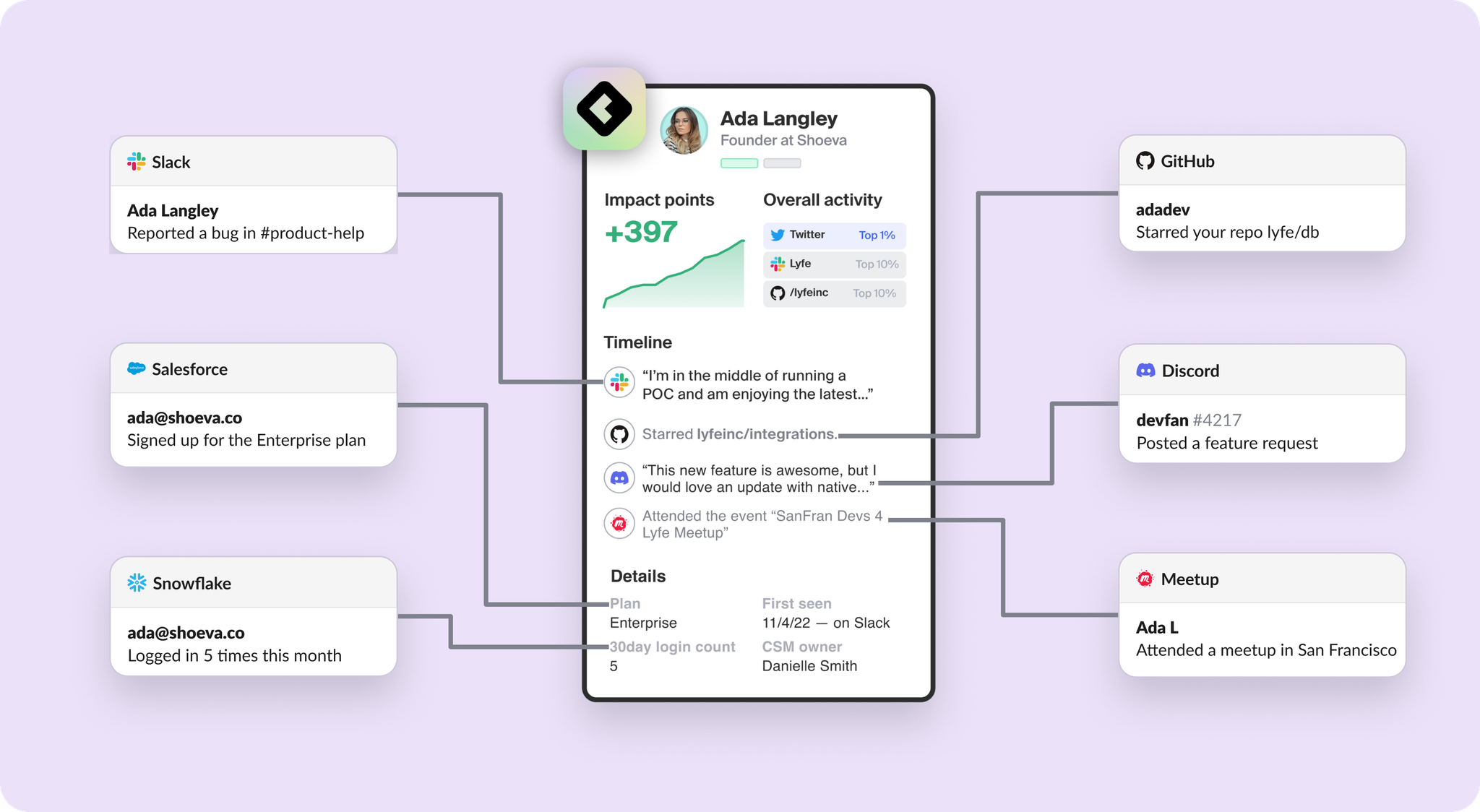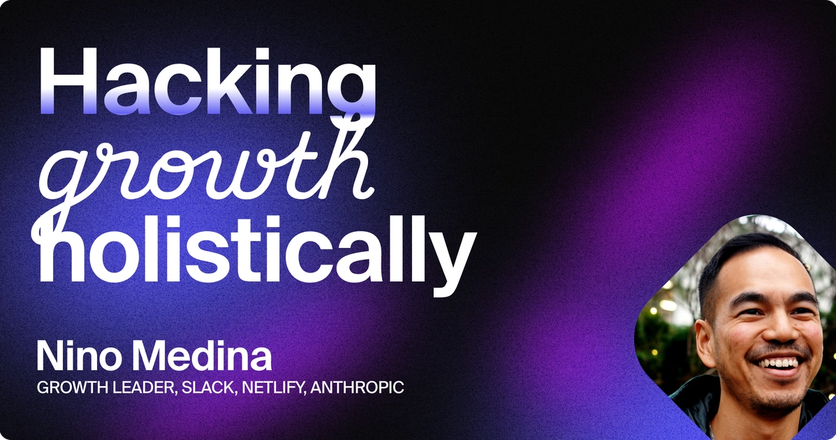Sales is hard. Selling to developers is harder.
No, developers aren’t some mystical or monolithic entity. They’re people who try and buy just like the rest of us.
But if your buyers are developers—whether you’re a commercial open-source company or standard SaaS vendor—traditional sales tactics will fall flat.
Keep reading to learn:
- How certain challenges are baked into selling to developers
- What to do (and not to do) during the dev sales process
- Why insight into developer audiences makes all the difference
The challenges of selling to developers
There’s a common refrain about selling to developers: Don’t.
The misconception is that devs are a cynical bunch who (a) hate being sold to and (b) don’t have buying power anyway.
But no one likes being sold to, especially when it’s done poorly. The majority of companies in the Cloud 100 have a product-led growth strategy in part because they know hands-on time with a product moves the needle more than a pitch deck.
As to the second point, well, the data doesn’t back it up.
Sixty-five percent of developers say they have influence over technology purchase decisions, according to Stack Overflow’s 2023 Developer Survey.
Meanwhile, SlashData’s latest State of the Developer Nation report showed that developers are increasingly purchase decision-makers themselves (32% for small businesses, 41% for medium-sized businesses, and 28% for large enterprises).
Yes, selling your product to individual devs one by one is not a recipe for sustainable growth. You need to get entire departments on board.
But if developers are your end users, they’re absolutely the audience you need to win over.
Besides, it’s often the devs themselves who find your product, give it a test drive, and share it with teammates and execs. This is what opens the door to targeted outreach and (fingers crossed) high-ACV deals.
That’s not to say that devs don’t present sellers with significant challenges.
By and large, developers are savvy buyers who are immune to traditional marketing and allergic to hard sales pitches.
They’re a skeptical audience that’s usually pressed for time. And, let’s be honest, it’s hard to sell someone a product when they have the ability to build their own solution.
On top of that, their preferred watering holes are typically located deep in the dark funnel.
If you’re using outdated sales tactics, they’re hard to get a response from and even harder to convince.

A product-led approach is table stakes
There’s a reason so many dev-focused companies go the open-source or product-led growth route.
These business models give developers exactly what they want: immediate hands-on access to your product.
Forget the discovery calls disguised as demos. If a developer has to meet with your sales team to try out your product, it’s often an immediate no.
Assuming your company’s built a product that developers are actually interested in, the first and most important step in the developer sales process is uncovering and analyzing buying signals.
This is what allows you to:
- Surface purchase intent.
- Evaluate customer fit.
- Execute effective outreach.
Sounds simple enough, but there are strategies to keep in mind (and pitfalls to avoid).
Tips for selling to developers
Here are three tactics that will give you a fighting chance:
1. Light up the dark funnel
Product usage data is essential, but it’s only one piece of the puzzle.
Besides, if you’re an open-source company, odds are you won’t have traditional product data to work with.
You need visibility into the full customer journey, which includes digital interactions across channels popular with devs: Discord, Discourse, GitHub, Stack Overflow, and so on.
By centralizing your view of this activity, you’ll discover key buying signals that indicate intent, such as product questions, repo activity, and more.
For example, say you work for an open-source software company. Visibility into issues and discussions on GitHub will surface bugs that need to be squashed—as well as users who may be a good fit for your organization’s managed services.
2. Add identity to intent
Intent is the starting point. Next you have to confirm product and customer fit, and that requires knowing exactly who you’re talking to.
You don’t just want a username and random profile picture, you want to know title, role, workplace, industry, organization size, tech stack, and other key details.
The ability to hone in on your ideal customer profile (ICP) is crucial to prioritizing which opportunities to pursue—as is being able to connect activity from multiple developers to a single organization. A team spec’ing out a project is generally a much richer opportunity than a lone wolf.
Imagine key buying signals—such as questions and comments related to your product—are flooding in from Stack Overflow, Twitter, and Dev.to. You only have so much time in the day. The ability to zero in on the people who match your ICP makes it much easier to organize your to-do list.
3. Keep an eye on your community
Community is considered mission-critical by many dev-focused companies, and for good reason. Research shows that mentions from industry peers and community members are key drivers of getting developers to explore an offering.
Your organization’s community—not just official destinations on Slack or Discord, but all activity spread across multiple channels—is a great source of context.
It gives you insight into where developers are in the buying cycle, what problems they’re trying to solve, and other details that will help you inform your outreach. Grouping these disparate channels in one place will help you determine not only who to reach out to, but also when and where.
Let’s say a prospect who signed up for a free trial of your product is asking their network for opinions of it on Reddit. There are features they like, but others they don’t. Plus, they’ve hit a wall that your documentation can’t seem to climb. Now would be a great time to get in touch and offer your help.
Mistakes to avoid when selling to developers
Here are three pitfalls to steer clear of:
1. Wasting developers' time
Developers aren’t misanthropic—they just don’t have the time to get sold on vaporware.
Forget the carefully curated slides and inflated ROI metrics. Be honest, clear, and direct about how your solution will help them solve a specific problem.
Step one is understanding what that problem is. Unless you meet the developer unicorn who happily signs up for a demo call with your company, you’ll need to uncover that yourself.
Dig into their digital activity to understand what they’re looking for and why. Then, instead of selling the value of your product, show the value of your product by giving them the resources they need to see and experience it for themselves.
2. Treating every opportunity the same
Not every developer is a revenue opportunity.
Some are forever hobbyists. Others will be just fine with the free version of your software. And still others just aren’t a good fit—either they won’t find enough value in your product or your organization won’t find enough value in the deal.
But you won’t know if you don’t have visibility into customer fit and context.
Resolve buyer identities and pay attention to their behaviors to understand if you should focus your efforts elsewhere.
3. Confusing end users with economic buyers
Developers are gaining more and more influence over purchase decisions, but that doesn’t make every dev a decision-maker.
The key component of “bottom-up” sales is “up.” You need to make sure you’re getting in front of the people who hold the purse strings.
Find out if your dev prospect is an economic buyer. If they’re not, lead with value and work to turn your contact into a product champion who’s empowered to make your case to their higher-ups.
It also helps to make sure you’re the first to know when those purchase decision-makers enter the chat.
How Common Room helps you close more dev deals
Common Room is built to help you centralize buying signals, resolve and enrich customer identities, and instantly take action on high-value opportunities.
First you choose from dozens of natively built and fully managed integrations (as well as custom data importing options) to connect your data sources—digital channels, product data warehouse, CRM—to Common Room.
This automatically centralizes your view of all user activity and creates rich user profiles via AI-powered demographic and firmographic enrichment.
“Common Room has become an essential tool for us to find strong prospects that turn into fruitful meetings, and thus lead to great opportunities and pipeline.”
—Gozie Nwachukwu, Head of Sales Development at Temporal

Next you quickly spotlight the biggest and best opportunities using filters and tags that allow you to explore your data based on fine-grained attributes and actions related to individuals, organizations, and activities across channels.
Qualify leads based on ICP fit, dig into users’ tech stacks, and hone in on economic buyers. Then get traction with those leads based on context you know is important to them—you can easily reference their latest product question, feature request, or top-of-mind topic using auto-categories and activity views.
People and their companies can be added to dedicated segments to easily track, report on, and engage. Create a burn-down list with a single click to add prospects to Outreach sequences, send to Salesforce, message on Slack, and more.
“Common Room helps us focus on the organizations that get the most value from our product. We know which attributes make someone a great fit for Replit. Before Common Room, I wasn't able to find and build relationships with these people."
—Lena Vu Sawyer, Head of Community at Replit

Finally, make sure you never miss an opportunity. Stay notified of the activity you care about with real-time team alerts and follow up with prospects at scale using automated workflows. Get instant updates on high-fit accounts in the channels where you already work and trigger messages to users who satisfy your preset criteria.
"I'm very data-driven, and when it comes to community intelligence and workflows, I've never seen anyone do it as comprehensively or as elegantly as Common Room. Nothing else in the market is close."
—Jared Jones, Head of Ecosystem at Moov

Selling to developers doesn’t take a miracle—just a thoughtful approach and a little help from the right tools.
Common Room gives you the insights and abilities you need to find and follow up with dev sales opportunities faster, smarter, and at scale.
Turn dev interest into dev action with Common Room
Ready to see how Common Room helps you upgrade your developer sales strategy?


